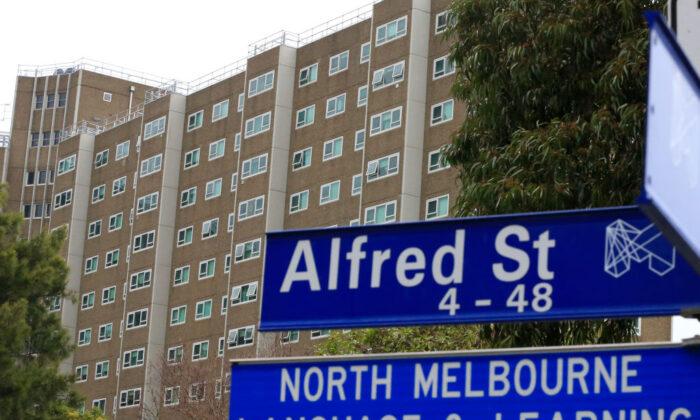Melburnians who live in a public housing development, have commenced legal action against the state to stop the demolition, and rebuilding, of their homes.
Under the Victorian government’s housing policy, some 44 public housing towers would be knocked down by 2051, and replaced by buildings with larger capacity. The areas would be for public and private use.
In September 2023, the centre-left Labor government announced it would demolish the first five towers by 2031, including buildings in Flemington, Carlton, and North Melbourne.
One of these is just five years old, in North Melbourne, and would be redeveloped into a 19-storey student housing building.
Former Victorian Premier Dan Andrews at the time called the proposal the state’s “biggest urban renewal project” and described the 44 towers as “out of date” and “crumbling.”
He noted that the newly built apartments could cater to an additional 20,000 people —three times more than the current number of residents.
The Lawsuit
On Jan. 25, Inner Melbourne Community Legal (IMCL) filed a class action lawsuit in the Supreme Court on behalf of about 1,000 residents, naming Housing Minister Harriet Shing, and Homes Victoria, as defendants.The class action called for the cancellation of the demolition plan.
Barry Berih, lead plaintiff of the case, said the decision had taken an “emotional and physical toll” on him and the community.
Mr. Berih, who has lived in North Melbourne Alfred Street housing for 25 years, said he could lose his community if the demolition went forward.
“We are still being kept in the dark,” Mr. Berih said in his statement of claims.
“The government keeps telling public housing residents that they have plans, but they still haven’t told us what the plans are.”
“I don’t know where I am going to be living or where I might end up, and the government isn’t giving us the information we need to make decisions.”
Mr. Berih also said that the community had not been consulted about the housing plan and that they found out from media reports.
Meanwhile, Elisa Buggy, IMCL’s chief executive, alleged that the government’s proposal lacked clarity around the relocation process and guidelines being followed.
Ms. Buggy said her organisation had received contradictory information, which made it difficult for them to provide accurate and detailed legal advice.
“Public housing residents have human rights, too,” she said.
“The right to live free from arbitrary or unlawful interference with home and with family, the right to have families protected, the right to have the best interests of children be protected, property rights, and the right to security.”
It’s the second time Mr. Berih has been involved in a class action against the state government. The first related to thousands of residents living in high-rise towers who were forced into a sudden COVID-19 lockdown in 2020 to stop an outbreak of the virus.
The current demolition is part of the former Andrews government’s plan to build 800,000 homes in the next decade.
The former premier said the redevelopment would turn the old buildings—built between the 1950s and 1970s—into “brand new, bright, safe, energy-efficient homes.”
Is There A Better Approach?
However, Chris Barnett, an architecture researcher at the University of Melbourne, argued in a commentary that the government’s demolish-and-rebuild approach would involve “moving and re-housing thousands of residents.”“It will also cost tens of millions of dollars per tower to temporarily rehouse these people while sites are redeveloped.”
“Demolishing such tall buildings will be a long, complex, and disruptive process which I estimate will cost additional tens of millions of dollars per site.”
He suggested that the government should extend and refurbish the towers instead of knocking them down.
Concerns About ‘Disposable Buildings’
Deputy Lord Mayor Nicholas Reece had also expressed concerns about the “wastefulness” of the demolition.“We’ll end up with a throwaway city of junk buildings as well as the unacceptable environmental cost that comes with that.”
On the other hand, Mr. Reece said better-built homes would bring about social benefits.
“There is a lot of people who are going to be living in this area … creating things like new through block links to allow more permeability through this area, greater pedestrian flow is a really positive thing.”






